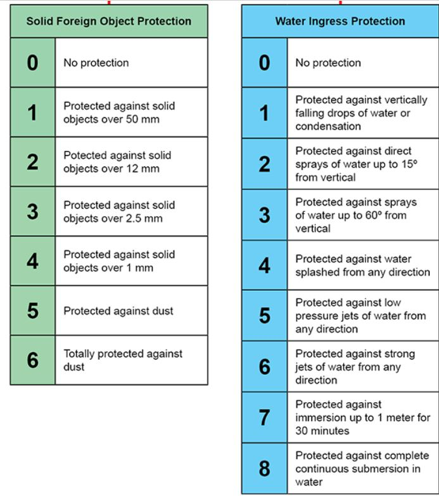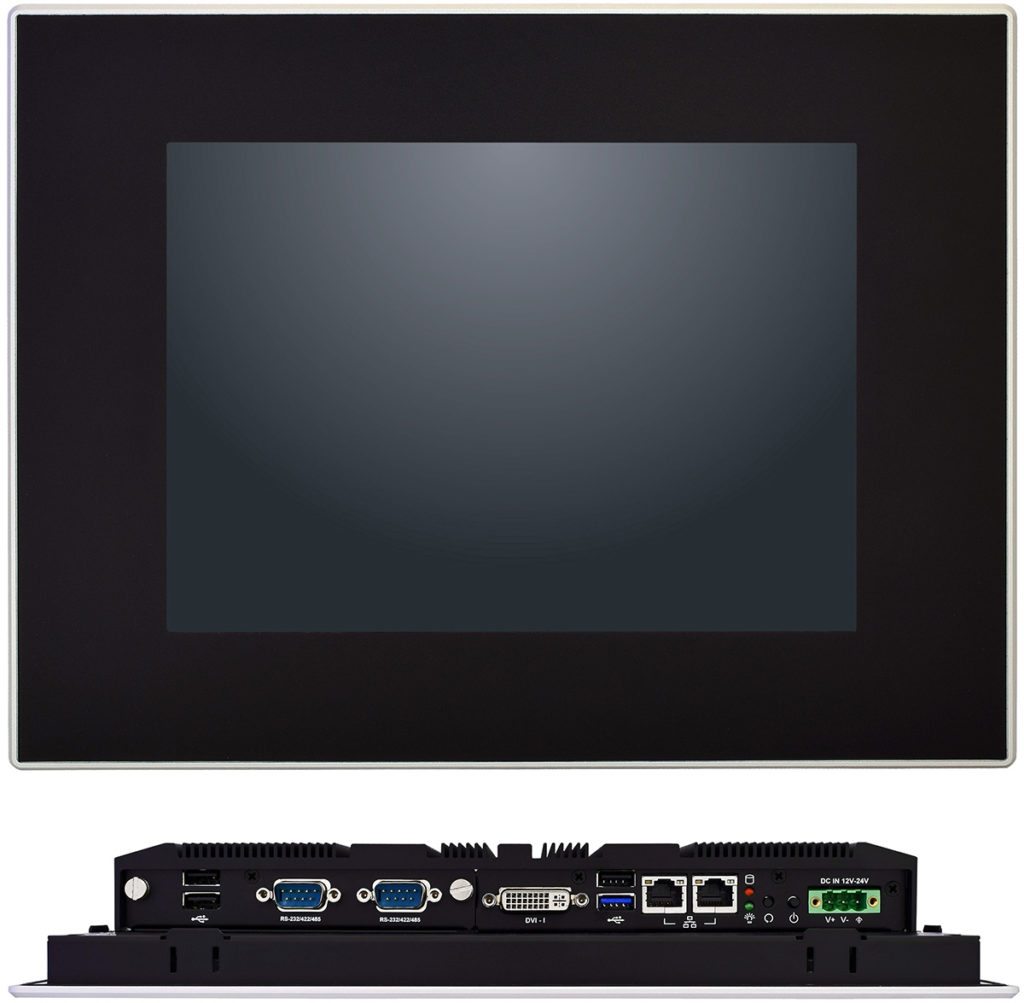
The inclusion of an IP rating is becoming increasingly common in everything from consumer electronics to electrical components with industrial applications. The IP rating, also known as the Ingress Protection Marking or the International Protection Marking, classifies and rates the degree to which mechanical casings and electrical enclosures protect a device against intrusion from foreign objects. Such objects could be, for example, tools, dirt, water, and accidental human contact. IP ratings are defined in the international standard EN 60529 (British BS EN 60529:1992, European IEC 60509:1989).

An IP rating consists of two numbers following the word “IP.” Each number has a specific meaning. The first number denotes the degree to which equipment is protected against intrusion by moving solid objects. A larger number indicates a higher degree of protection from increasingly smaller particles. For example, Level 0 means no special protection, while Level 1 means protection from objects greater than 50 mm in diameter, such as human hands. Levels 2, 3, and 4 denote protection from fingers, tools, and small wires, respectively. At Level 6, the highest rating, the equipment is considered to be completely dust-proof. Such protection is not required for most applications so Level 4 and 5 ingress protection is typical for most packaged electronic systems and computers. Level 6, dust protection is reserved for the embedded computer applications requiring the highest level of protection against dust for hostile environments.
The second number in an IP rating denotes the level of protection from moisture and the severity of force in the water stream. (For this exercise, IP rating is water specific and no other type of liquid is rated.) Again, a higher Level number means a higher degree of protection. Level 0 is no protection. Level 1 means protection against falling droplets. Levels 2 and 3 indicate protection from droplets coming at the device from a slightly tilted angle—up to 15 degrees (Level 2) and up to 60 degrees (Level 3). Level 4 offers protection against water splashes from all directions. Levels 5 and 6 protect against water jets of low and high pressure, respectively. Levels 7, and 8 protect against full immersion in water under increasing amounts of pressure. Level 9K provides protection from close-range pressure and high temperatures, such as pressured steam.
Why should engineers understand the IP Rating?
When engineers want granular information on product protection, the IP rating is particularly useful. For example, instead of simply describing a product as dust-resistant and waterproof, a manufacturer can use an IP rating to clarify the protection level and differentiate a product from its competitors.
Another value that IP ratings offer is safety. For example, an electrical socket that’s rated IP22 can only protect against hands and vertically falling droplets, but not against wires (Level 3) and water splashes coming at an angle (Level 4). As a result, IP ratings help engineers understand the capacity and performance of a product so that they can select appropriate parts more accurately.

Take a look at the WINSYSTEMS’ PPC65B Panel PC Series which has a certified IP rating of 65 (IP65-certified). The platform is targeted at industrial IoT applications. The PPC65B Series stands apart from the competition by offering protection against other environmental factors. The PPC65B Series has an operating temperature range of -20°C to +70 °C and a storage temperature range of -40°C to +85°C (20% to 90% non-condensing). In addition, it is vibration (IEC 60068-2-64) and shock (IEC 60068-2-27) tested. Equipped with an Intel Quad-Core Atom E3845 processor, the PPC65B series delivers superior performance thanks to a vast feature set, including flexible I/O expansion capability through 2X RS-232/422/485 interfaces. Lastly, PPC65B supports multiple operating systems such as Linux and Windows 10.
